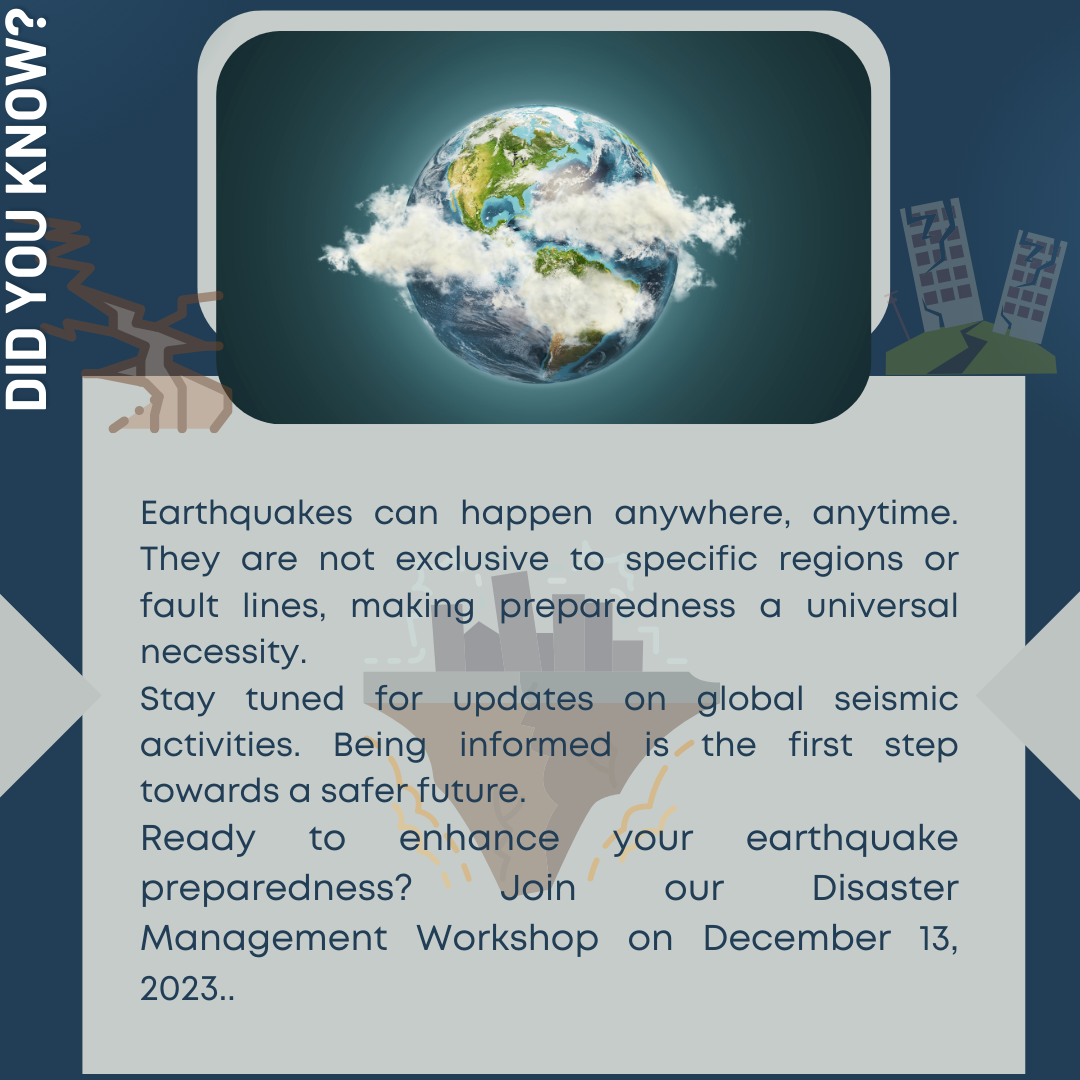Earthquakes are natural phenomena that have fascinated and terrified humanity for centuries. These geological events, caused by the sudden release of energy in the Earth’s crust, can have devastating consequences, reshaping landscapes and affecting human communities. In this article, we will delve into the science behind earthquakes, their causes, and the impact they can have on our planet.
The Science Behind Earthquakes:
At the heart of every earthquake is the Earth’s crust, a dynamic and ever-changing layer of rock that covers the planet. The Earth’s crust is divided into several tectonic plates, and these plates are constantly in motion, albeit at an incredibly slow pace. The boundaries where these plates meet are known as fault lines. It is along these fault lines that earthquakes are most likely to occur.
The primary cause of earthquakes lies in the release of stress that builds up along these fault lines. As the tectonic plates move, they can become stuck due to friction, preventing them from freely sliding past each other. The stress continues to accumulate until it overcomes the frictional resistance, causing a sudden release of energy in the form of seismic waves.
Types of Faults and Earthquakes:
There are three main types of faults, each associated with different types of earthquakes. Normal faults occur when two blocks of the Earth’s crust pull away from each other, creating tensional stress. Reverse faults, on the other hand, result from the compression of the Earth’s crust, with one block being pushed on top of the other. Strike-slip faults involve horizontal movement, with blocks sliding past each other horizontally.
The severity of earthquakes is measured on the Richter scale, which quantifies the amount of energy released during an event. The higher the Richter scale magnitude, the more powerful and potentially destructive the earthquake.
The Impact on Human Communities:
Earthquakes can have a profound impact on the communities they strike. The immediate and most visible effect is the physical damage caused by the shaking of the ground. Buildings, bridges, and infrastructure can collapse, leading to injuries and loss of life. In densely populated urban areas, the destruction can be catastrophic.
Beyond the immediate physical damage, earthquakes can also trigger secondary disasters. One of the most common consequences is the occurrence of tsunamis, especially in coastal regions. The sudden displacement of water caused by an undersea earthquake can result in massive oceanic waves that inundate coastal areas, causing widespread destruction.
Preventing and Mitigating Earthquake Impact:
While earthquakes are natural events that cannot be entirely prevented, efforts can be made to minimize their impact on human communities. Early warning systems can provide valuable seconds to minutes of notice, allowing people to take cover and evacuate in advance of the shaking. Building codes that emphasize earthquake-resistant construction techniques can also reduce the risk of structural damage.
Community preparedness and education play a crucial role in minimizing the human toll of earthquakes. Training people on how to “Drop, Cover, and Hold On” during an earthquake, as well as providing information on emergency preparedness and evacuation procedures, can save lives.
Conclusion:
Earthquakes are a testament to the dynamic and ever-changing nature of our planet. While they can be destructive and terrifying, understanding the science behind earthquakes and implementing measures to mitigate their impact can help protect human lives and property. As we continue to learn more about these geological events, our ability to predict, prepare for, and respond to earthquakes will improve, ultimately making our communities more resilient in the face of nature’s powerful force.

